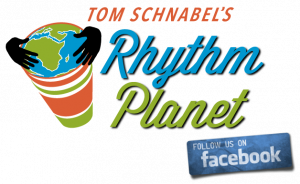
Water has always fascinated me–the way it looks, the way it moves and flows, the way it feels when you’re enveloped by it. It allows you a reprieve from gravity, an environment where you can float suspended and temporarily occupy another mental and spiritual zone.
I especially love the power and unbridled energy of the sea and I savor the color of oceans in different places: green, blue, aquamarine, wine-dark, translucent, crystalline. I share with other lifeguards, surfers, and “water people” the gestalt of being excited whenever I come upon the vista of a beautiful ocean and waves. Since my teens, the ocean has never lost its seductiveness and I still get turned on by it.
As a swimmer and former lifeguard, I’ve always loved swimming and have spent a lot of time in pools. But pools lack the power and unpredictability of the ocean. Great music, like great waves, shares this grandeur; it takes us on new spiritual rides and psychic journeys, inspiring us to think better thoughts and dream of what the next wave or chord might be.
When I was around 12 or 13, my first sports passion was cycling. I quickly gave up cycling and my dreams of winning the Tour de France when I started surfing a year later. Then I discovered jazz, and my love of jazz only increased as my surfing improved. Both jazz music and the ocean are powerful, unpredictable, and represent (at least for me) strong psychic forces. Just as no two jazz solos are alike, neither are two waves ever identical, and good surfers or jazz musicians find renewal and inspiration in the spirit of improvisation, trying new things, sometimes succeeding brilliantly, sometimes not.

Goethe once called architecture “frozen music”. I would extend this and compare the oceans to music in general and surfing to jazz music in particular. Both waves and music share a rhythmic essence: the sea and its waves are silvery, liquid, powerful, and always moving. Like the ocean, music is similarly liquid, unpredictable, and propulsive; just listen to the harmonically divine music of Bach (or Keith Jarrett, who was no doubt inspired by it): their magnificent music has the symmetry of a chambered nautilus, the flow of a perfect Malibu wave.
I also link waves and music when I ponder the gorgeous improvisations in classic solos by Stan Getz, Miles Davis, and John Coltrane; these jazz titans remind me of great surfers like Phil Edwards, John Peck, Paul Gebauer, and Mickey Dora (guess I’m dating myself here). Both great surfers and jazz artists take years of practice to hone their athleticism and perfect their artistry, each with their own brilliance and personal style. They “surf the changes” creating their own, unique way of riding the changing face of a wave or chord changes. Surfing at its best is also great choreography, a dialogue between surfer and the ocean.
The connection of music and surfing also was etched into my brain by the brilliant use of music in film. The films of Bruce Brown, used jazz music to make wave riding even seem more balletic and lyrical. This music was the perfect counterpart to the smooth pas de deux between surfer and wave. Think, if you can, of watching surf legends like John Peck at the Pipeline, Phil Edwards at San Onofre, Mickey Dora at Malibu, Paul Strauch Jr. at Haleiwa, or Jeff Hakman, and Paul Gebauer at Sunset. Propelled by the smooth, regular, and crystalline tubes of these great surf meccas, these immortal surfers improvise great solos just like our favorite jazz champions. Indeed, the great surfers choreograph their movements to the changing face of the waves, all the while dancing to the rhythms of the waters, a personal duet with the sea.
Here’s one of the few video clips found out there of Bruce Brown’s first surf documentary, Slippery When Wet, from 1958. The film was scored by West Coast Jazz legend, Bud Shank. The jazz starts when the waves do at 2:47.
Final thought–if I were going to music supervise a surf film, I’d use plenty of jazz, some classical, as well as the visceral yet dreamy sounds of bands like Underworld, St. Germain, Massive Attack, music from the Six Degrees label, and other groups. There’s an unprecedented variety and access to all kinds of music today, and most of it never gets used in film!

